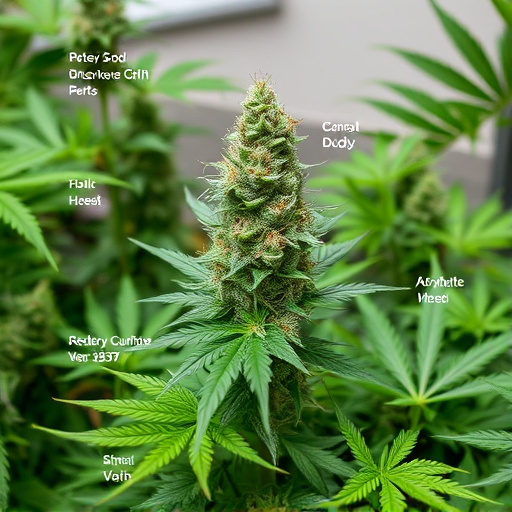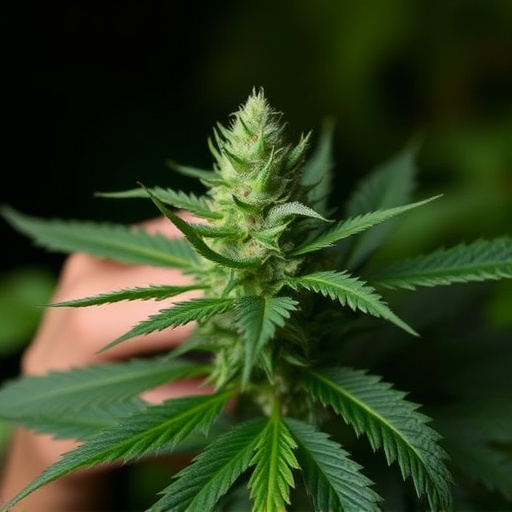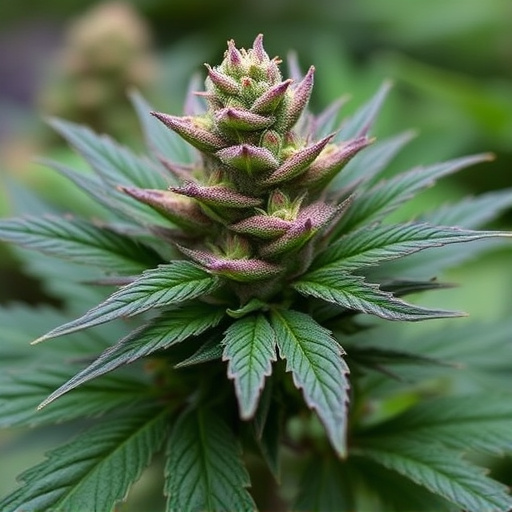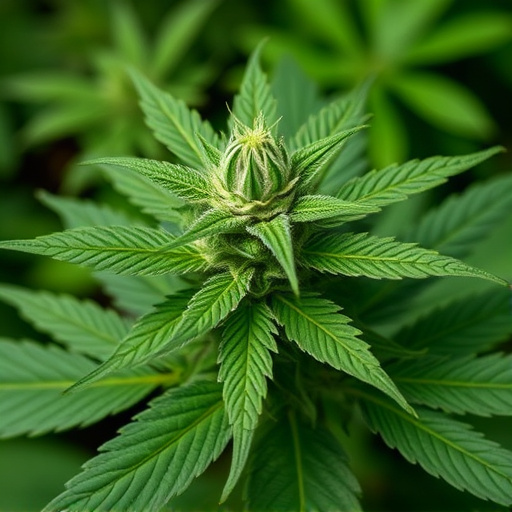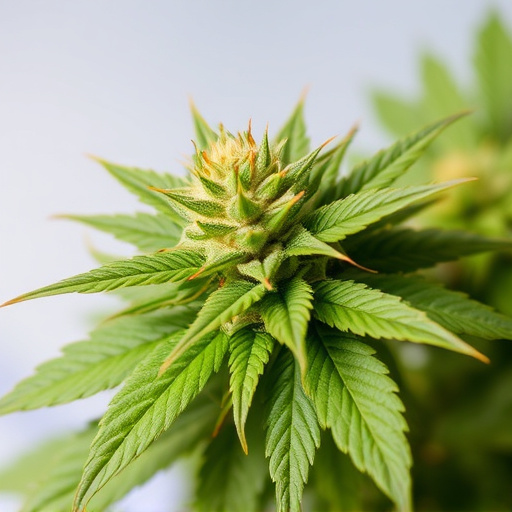The distinctive aroma of cannabis comes from terpenes (like myrcene and linalool) and cannabinoids (THC, CBD), which not only create diverse scents but also offer potential therapeutic effects. Myrcene, with its earthy musky scent, is particularly effective for stress relief and pain management, making it a popular choice for migraine relief. Understanding the balance between these chemical compounds helps individuals choose the best cannabis strains for migraines, combining aromatic appeal with targeted therapeutic benefits.
Cannabis flowers are renowned for their distinct, often potent, aromas, which have captivated users and scientists alike. The strong smell of cannabis is more than just a sensory experience; it’s a result of intricate chemical interactions. This article delves into the chemistry behind these scents, exploring terpenes and their impact on cannabis’ unique fragrance profile. We’ll also uncover why powerful aromas matter, from enhanced experiences to potential health benefits, including the role of specific strains like some of the best cannabis strains for migraines known for their robust scents.
- The Chemistry Behind Cannabis Aromas
- – Exploring the chemical compounds responsible for cannabis' distinctive smells.
- – Terpenes and their role in scent creation.
The Chemistry Behind Cannabis Aromas

The distinct and often powerful aroma of cannabis is a result of complex chemical compounds known as terpenes and cannabinoids. These compounds are responsible for the unique scents and flavors associated with different strains, including those renowned for their potential benefits in alleviating migraines. In the case of cannabis, certain terpenes like myrcene and linalool contribute to the floral or citrusy notes that many strains exhibit. Myrcene, for instance, is known for its earthy, musky scent and has been linked to potential therapeutic effects, including stress relief and pain management—attributes that make it appealing for those seeking respite from migraines.
The combination of terpenes and cannabinoids creates a complex olfactory experience. Cannabinoids like THC (tetrahydrocannabinol) and CBD (cannabidiol) not only affect the mind but also play a role in the overall scent profile, with CBD-rich strains often having more subtle aromas compared to their THC-dominant counterparts. When it comes to choosing the best cannabis strains for migraines, understanding this chemical interplay can help individuals select varieties that offer both aromatic appeal and potential therapeutic benefits tailored to their needs.
– Exploring the chemical compounds responsible for cannabis' distinctive smells.
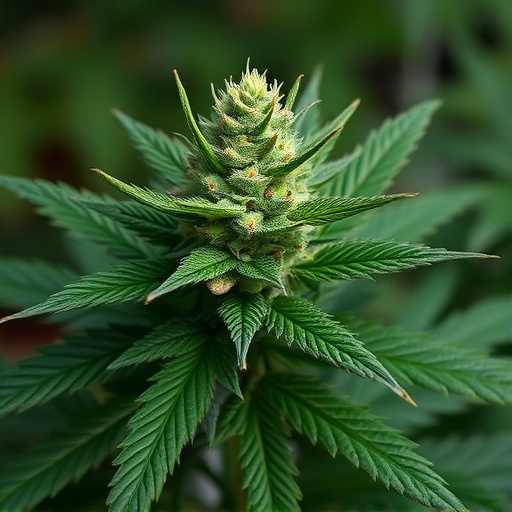
The powerful aroma of cannabis is a result of complex chemical compounds known as terpenes and cannabinoids. These compounds are responsible for not only the distinct smell but also the various effects users experience when consuming cannabis. Terpenes, in particular, play a significant role in creating the unique scent profiles that differentiate one strain from another. For instance, myrcene is a common terpene known for its earthy, musky odour and is often sought after by those looking for relief from migraines or anxiety. Linalool, another prominent terpene, offers a more floral and woody aroma, which has been linked to promoting relaxation and better sleep.
Cannabinoids like tetrahydrocannabinol (THC) and cannabidiol (CBD) also contribute to the odour but primarily affect the high one gets from cannabis. THC is known for its psychoactive properties, while CBD is celebrated for its potential therapeutic benefits without the mind-altering effects. The interplay between these compounds creates a complex olfactory experience that has made certain strains, renowned for their specific aromas and effects, popular choices for medical users seeking relief from various conditions, including migraines.
– Terpenes and their role in scent creation.
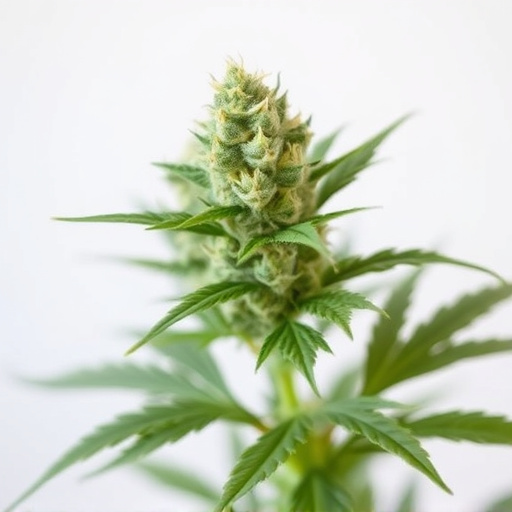
Cannabis flowers emit their distinctive aromas thanks to a diverse array of chemical compounds known as terpenes. These organic compounds, many of which are also found in other plants, play a crucial role in both scent creation and various therapeutic effects. Terpenes contribute significantly to the unique flavor profiles we associate with different cannabis strains, making some varieties more appealing for specific needs, like alleviating migraines.
Among the vast array of terpenes in cannabis, certain ones are particularly notable for their potential benefits. For instance, myrcene is known for its earthy scent and has been linked to relaxing properties, while linalool offers a floral aroma and may promote feelings of calmness. Understanding the terpene makeup of different cannabis strains can help users choose the best options for addressing specific conditions, including migraines, where certain terpenes’ soothing and anti-inflammatory qualities might provide relief.
Cannabis flower’s potent aroma is a result of complex chemical interactions, particularly from terpenes, which not only contribute to its distinctive scent but also offer potential therapeutic benefits. Understanding these compounds explains why certain strains, like those popular for treating migraines, have such appealing and unique fragrances. By delving into the chemistry of cannabis, we uncover not only the reasons behind its strong smell but also the key to unlocking its medicinal properties, making it a valuable resource for natural wellness solutions.






